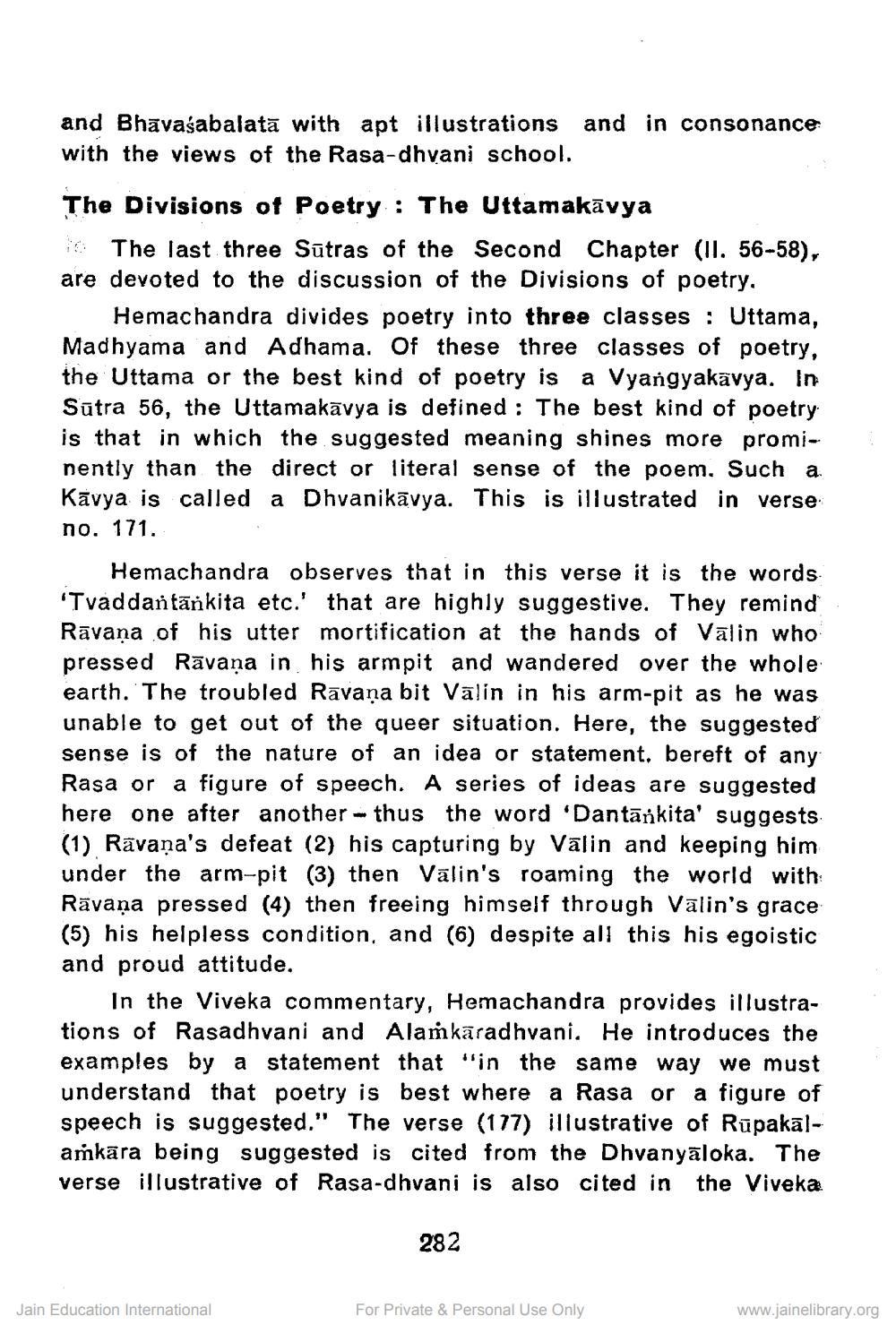________________
and Bhavasabalatā with apt illustrations and in consonance with the views of the Rasa-dhvani school.
The Divisions of Poetry : The Uttamakāvya
o The last three Sūtras of the Second Chapter (II. 56-58), are devoted to the discussion of the Divisions of poetry,
Hemachandra divides poetry into three classes : Uttama, Madhyama and Adhama. Of these three classes of poetry, the Uttama or the best kind of poetry is a Vyangyakävya. In Sūtra 56, the Uttamakāvya is defined : The best kind of poetry is that in which the suggested meaning shines more prominently than the direct or literal sense of the poem. Such a Kāvya is called a Dhvanikāvya. This is illustrated in verse: no. 171.
Hemachandra observes that in this verse it is the words. 'Tvaddantāńkita etc.' that are highly suggestive. They remind Rāvana of his utter mortification at the hands of Vālin who pressed Rāvana in his armpit and wandered over the whole earth. The troubled Ravana bit Välin in his arm-pit as he was unable to get out of the queer situation. Here, the suggested sense is of the nature of an idea or statement. bereft of any Rasa or a figure of speech. A series of ideas are suggested here one after another - thus the word 'Dantānkita' suggests (1) Rāvana's defeat (2) his capturing by Vālin and keeping him under the arm-pit (3) then Vālin's roaming the world with Rāvaņa pressed (4) then freeing himself through Vālin's grace (5) his helpless condition, and (6) despite all this his egoistic and proud attitude.
In the Viveka commentary, Hemachandra provides illustrations of Rasadhvani and Alamkāradhvani. He introduces the examples by a statement that "in the same way we must understand that poetry is best where a Rasa or a figure of speech is suggested." The verse (177) illustrative of Rūpakālaskāra being suggested is cited from the Dhvanyāloka. The verse illustrative of Rasa-dhvani is also cited in the Viveka
282
Jain Education International
For Private & Personal Use Only
www.jainelibrary.org




